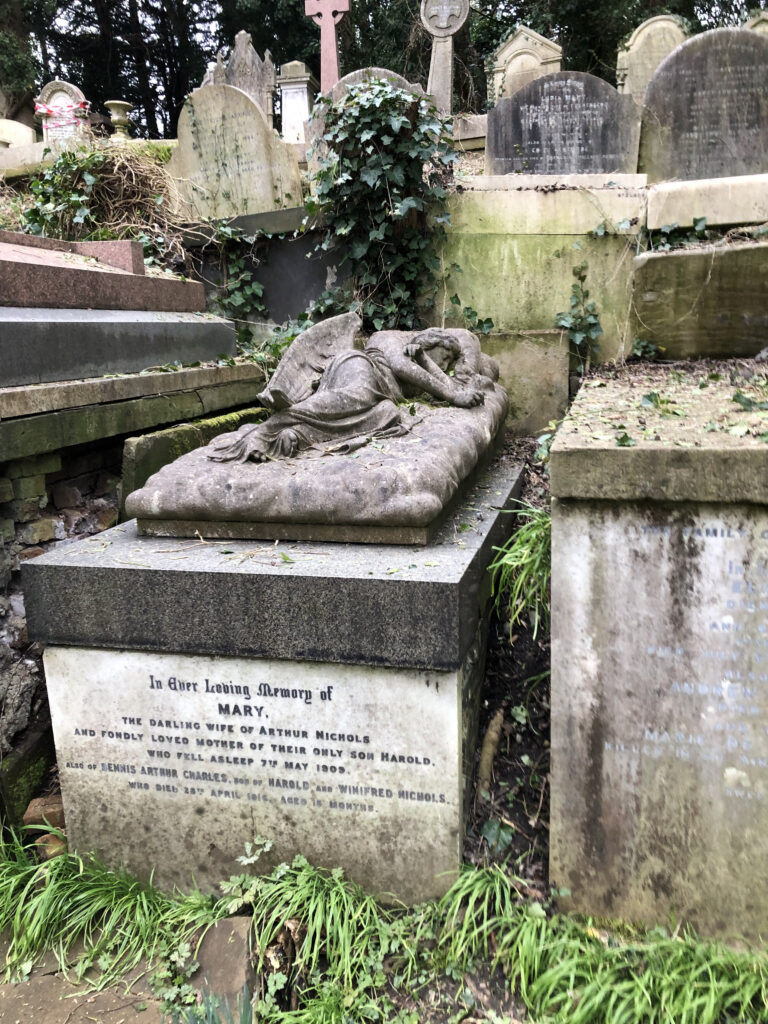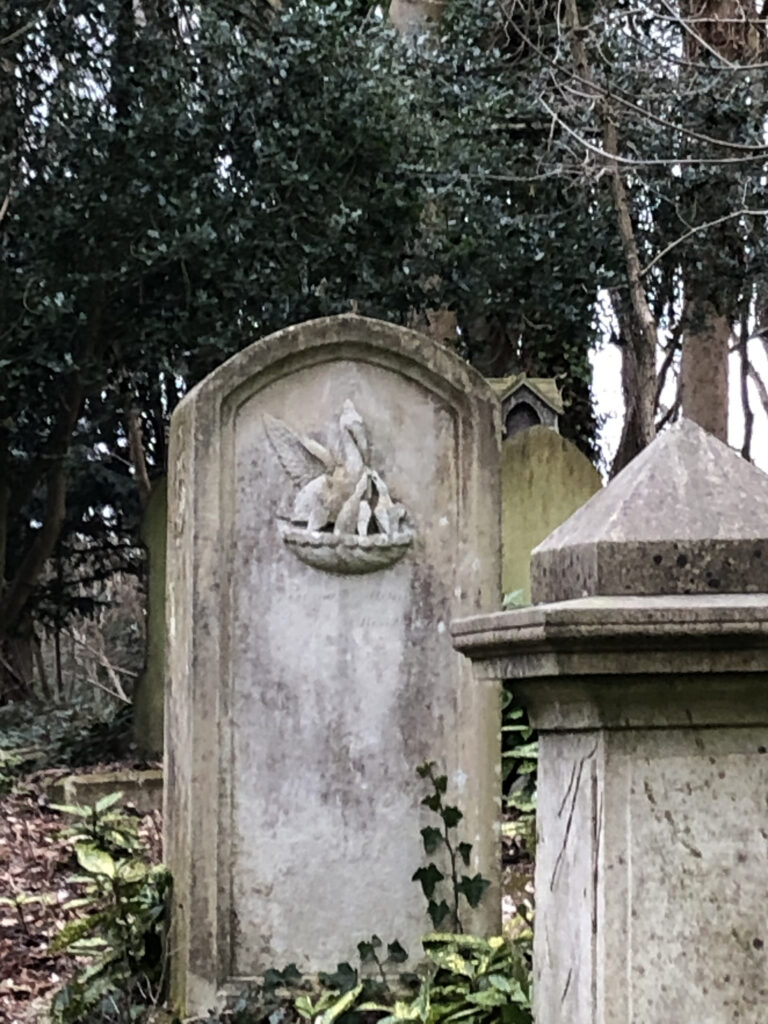Highgate is an eminently pleasant northern area of the English capital. There are many nice shops, quality restaurants and spectacular properties in London N5. But it is perhaps most famous for being the residence of hundreds of people who can’t shop, don’t eat and have no need of a fancy home, or indeed accommodation of any sort. For this is the location of one of the most well-known final resting places in the world – Highgate Cemetery.
Karl Marx is its most celebrated inhabitant. He lives in the East Cemetery. But it was on the other side of Swain’s Lane, in the West Cemetery, that I was most intrigued when I went there early this past spring, the first time I had visited the place in a couple of decades. This was on account of having at last completed the marathon (1012 pages) of The Ink Black Heart, the sixth novel in the Cormoran Strike/Robin Ellacott detective series written by Robert Galbraith (aka J.K. Rowling), during which Robin takes a guided tour of the cemetery, which is the setting for the murder they are investigating.

Galbraith’s/Rowling’s use of the cemetery is carried off well, albeit with appropriate twists to suit her purposes. (Her book is fiction, after all.) She writes (page 646, since you ask): “Quite suddenly, the young man in the Drek T-shirt in front of Robin came to a halt, pointing at a tombstone that stood on a steep rise above the path, surrounded by thick undergrowth…the mother pelican plucking at her own breast, with a nest full of hungry chicks, beaks upturned, ready to be fed with her blood.” Followed by: “Oh my God,” breathed the girl in the Paperwhite T-shirt, speaking through the fingers she pressed to her mouth. “I’m going to cry.”

In fact, taking the route the book portrays its protagonists as having done, I think you wouldn’t have seen this grave at all. Its front faces the other way. And it’s not on a steep rise. And, as you can tell, the reality of what one sees does not quite accord with the momentousness of the occasion which the author has suggested. But then, hey, it is fiction. And she is very good at it.
Finally, the Red Lion & Sun (a photo of its exterior is shown on the home page) is one of several Highgate pubs fictionally visited by either Strike or Ellacott or both. I visited it in real life after my tour and had a good lunch there. (Devilled mackerel; excellent.) Given it is a pub, though, there was one notable outlandishness on the menu: a half-bottle of 2007 Chateau d’Yquem on offer for £240. And, no, we didn’t.
But, of course, Strike and Ellacott did solve their crime. Which leaves just one matter outstanding. What happened to the hyphen in Ink Black?
